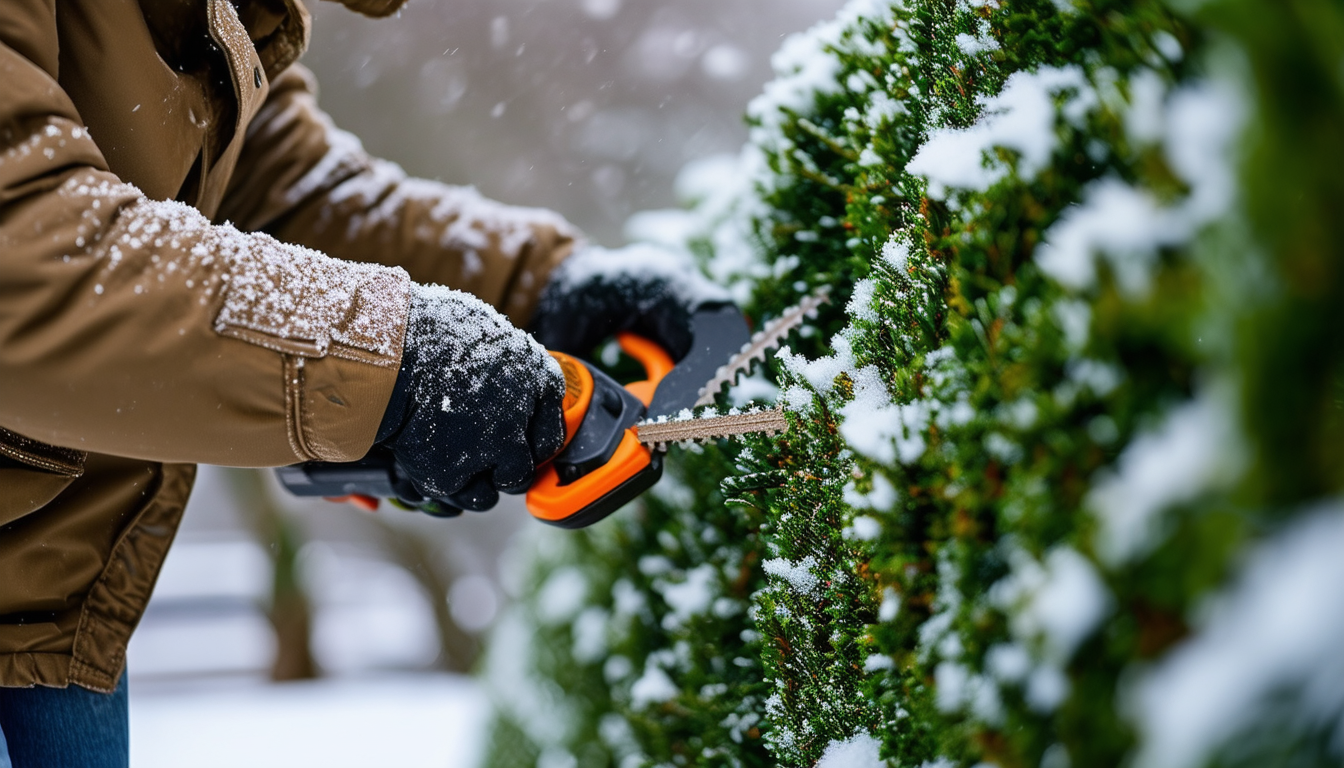
Unlock the secrets to maintaining a pristine hedge, even during the coldest months of the year.
Why Winter is the Perfect Time for Hedge Trimming
Winter is often considered an ideal time for hedge trimming due to several reasons. During the colder months, most plants enter a state of dormancy, meaning they are not actively growing. This makes it easier to shape hedges without encouraging new growth that could be damaged by subsequent frosts.
Additionally, the absence of leaves on deciduous hedges provides a clear view of the hedge structure, allowing for more precise trimming. The cooler temperatures also reduce the risk of plant diseases and pests, making it a healthier period for your hedges.
Essential Tools and Equipment for Cold-Weather Hedge Trimming
Trimming hedges in winter requires specific tools to ensure efficiency and safety. A good quality pair of hedge shears or electric trimmers are essential for achieving clean cuts. For thicker branches, a pair of loppers or a pruning saw may be necessary.
Ensure you have protective gear such as gloves, safety goggles, and possibly ear protection if using loud power tools. It's also advisable to use tools with ergonomic handles to reduce hand fatigue, especially in cold weather.
5 Step Guide to Trimming Hedges in Winter
1. **Inspect the Hedge:** Before you start trimming, inspect the hedge for any signs of disease or damage. Remove any dead or diseased branches first.
2. **Plan Your Trim:** Decide on the shape and height you want for your hedge. Marking these points with strings or temporary markers can help guide your trimming.
3. **Start from the Bottom:** Begin trimming from the bottom of the hedge and work your way up. This ensures you don't miss any sections and helps maintain an even shape.
4. **Cut at an Angle:** Angle your cuts slightly to ensure water runs off the hedge and doesn't pool on the branches, which can cause rot.
5. **Clean Up:** After trimming, clean up the area to remove any debris that could attract pests or cause disease.
Common Mistakes to Avoid When Trimming Hedges in Winter
One common mistake is trimming too late in the winter season, which can stimulate new growth that is vulnerable to late frosts. Always aim to complete your trimming by mid-winter.
Another mistake is cutting back too aggressively, which can weaken the plant and make it susceptible to diseases. Always leave some buds on the branches to ensure healthy regrowth in the spring.
How to Care for Your Tools After Winter Trimming
Proper maintenance of your trimming tools is crucial for their longevity and performance. After each use, clean the blades with soapy water to remove sap and debris. Dry them thoroughly to prevent rust.
Sharpen the blades regularly to ensure clean cuts, which are healthier for the plants. Store your tools in a dry place to avoid moisture damage, and consider applying a light coat of oil to metal parts to prevent rusting.
Which hedging varieties are best?
Certain hedging varieties are better suited for winter trimming due to their resilience and growth patterns. Evergreens like boxwood, yew, and holly are excellent choices as they maintain their structure and foliage year-round.
Deciduous varieties such as beech and hornbeam are also good options because they can be trimmed when bare, allowing for precise shaping.
Safety tips when cutting hedges
Always wear protective gear, including gloves and safety goggles, to protect against debris and sharp branches. Make sure your ladder is stable if you're working at height, and never overreach – move the ladder instead.
Be cautious of power tool cords to avoid tripping or cutting through them. If you're using electric trimmers, ensure the area is dry to prevent electrical hazards.



